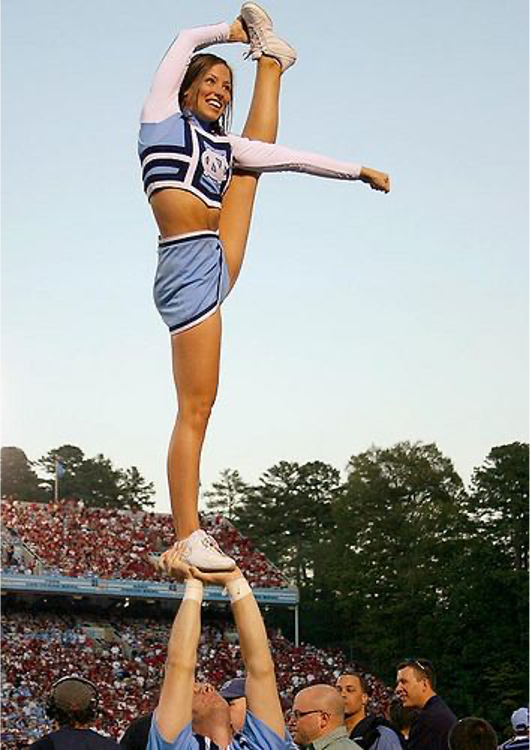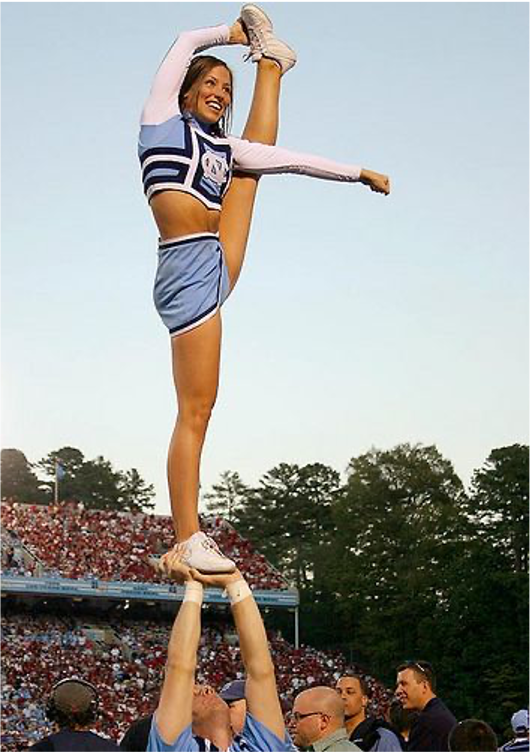Correcting Muscle Imbalance for Cheerleaders
Cheerleaders and gymnasts are usually strong but at the same time flexible. Occasionally through overtraining, patterns of tightness and weakness start to develop and can lead to overuse injuries or other musculoskeletal injuries. Depending upon which skills are practiced in what position, this can lead to muscle and postural imbalances. Because of this, correcting muscle imbalances for cheerleaders is important to learn and practice exercises and stretches correctly to enhance skill level and prevent injury.
Physical Therapy for Muscle Imbalance

1 – If you attempt exercises and notice your low back arching or stand with your back arched constantly, this could be a sign of abdominal weakness. There are 4 primary abdominals: the rectus abdominis (six-pack muscles), internal and external obliques, and the deepest muscle, the transversus abdominis. This tends to be the hardest muscle and is usually weakest of all the abdominals but should be the primary focus of all strengthening programs. To start, imagine there is a string between your belly button and low back, and you are trying to shorten it and tighten it when lying on your back. Hold this contraction for 5 seconds to start, and eventually progress performing this seated, standing, and incorporating this contraction into movement-based exercises. If you arch your back, you’re not yet ready to progress and should reduce the exercise intensity. To learn more about physical therapy for muscle imbalance as it pertains to weak abdominals check out our core strengthening services.
Physical Therapy for Muscle Imbalance

2 – Most cheerleaders and gymnasts stand with their toes turned outwards, which could mean that your hip flexors or calves are tight. Your hip flexors (Iliopsoas) are on the front of your hip and lift your thigh up towards your head. By stretching your hip flexors lying on a table with your leg off the table while pulling your other knee towards your chest can help lengthen your Iliopsoas. When performing a split, folding the top part of your foot inward can also help minimize low back strain and limit tightness to your hip flexors.
3 – Another common cause of muscle imbalance is weakness in your hip abductors – the large muscle group on the outside of your hips. These muscles are the primarily stabilizer of the hips and can lead to hip, knee, and back issues when they are not properly strengthened. Simply by standing on one leg and moving one leg out to the side slowly while maintaining an upright posture effectively strengthens these muscles. Another great exercise for correcting muscle imbalance is to crouch down in a mini squat and slowly step sideways right for 1 minute, and then left for 1 minute.
Muscle imbalances with cheerleaders and gymnasts are fairly common which could lead to various injuries. However, with proper strength training and exercises for correcting muscle imbalance, Specialized Physical Therapy can help you minimize these potential injuries. If you are an athletic director or coach, our physical therapists may be able to come out to your gym/facility and help identify these muscle imbalances and provide some simple guidance and exercises to help combat these injuries. If interested, please contact us or swing by our clinic for a complimentary screening.
